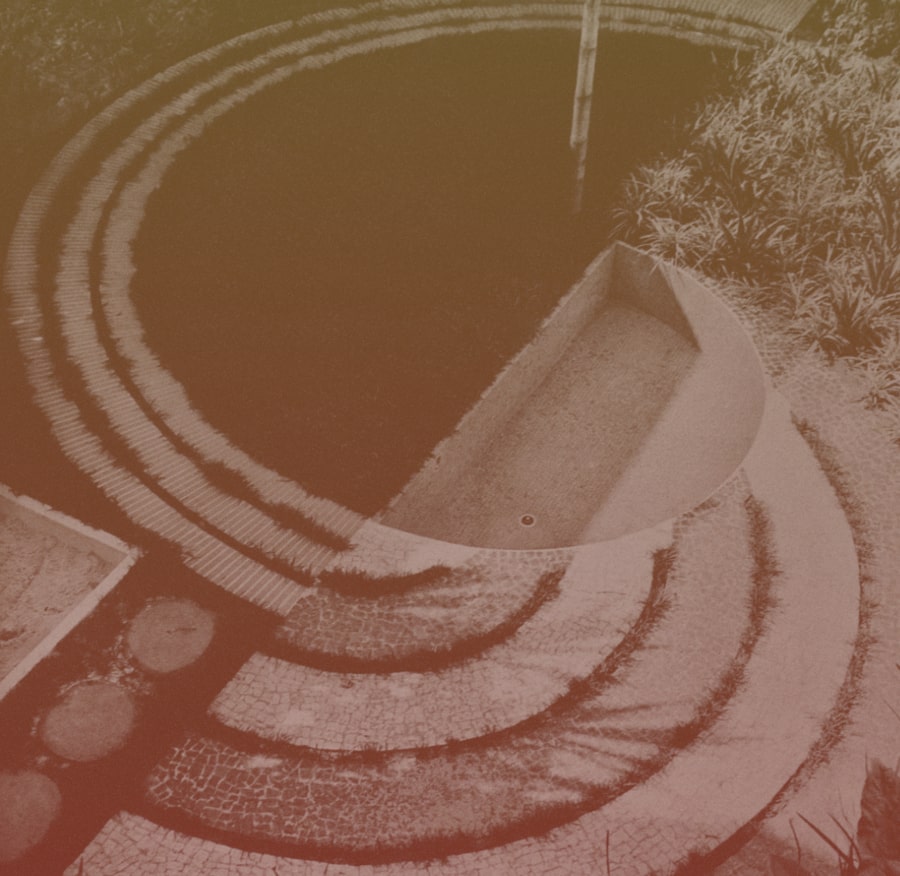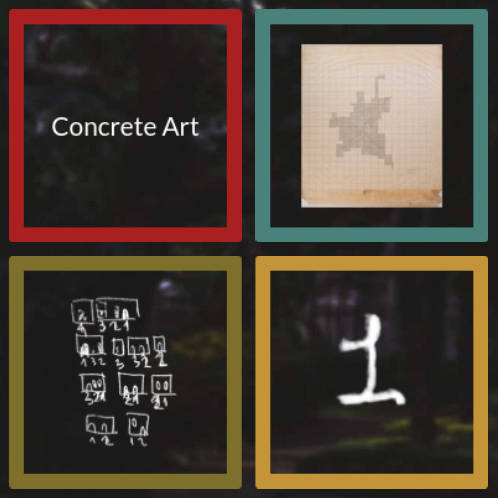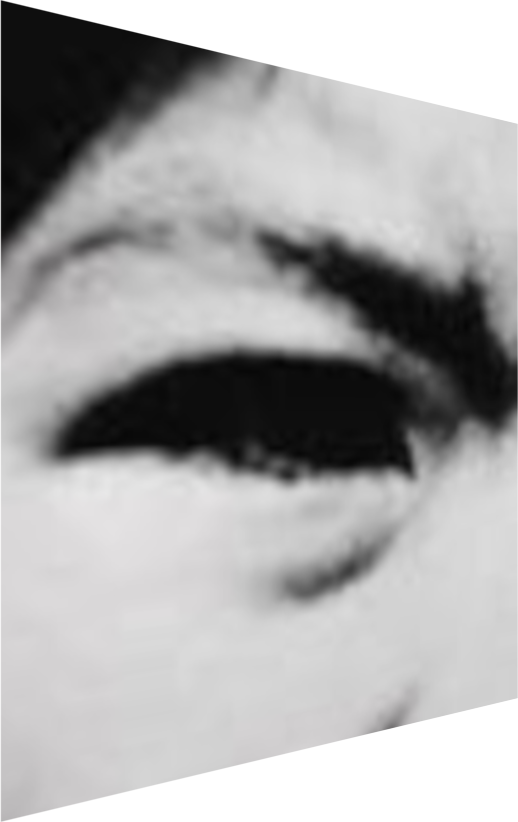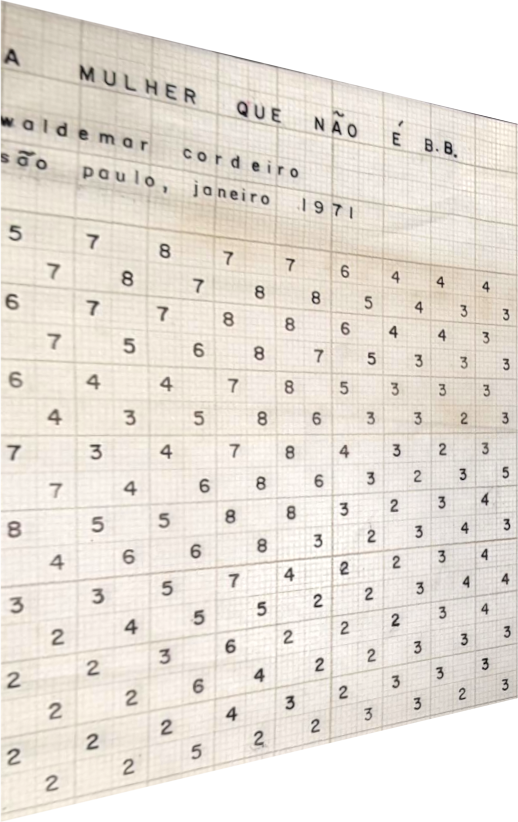Exhibition Background
Bits of the Planet is an experimental online platform that explores the life and work of Waldemar Cordeiro (Rome 1925—São Paulo 1973), a leading Brazilian post-war artist and theorist. Bits of the Planet highlights throughlines in Cordeiro’s practice by linking together his experiments in Concrete art, landscape architecture, and visionary theories about what he termed “arteônica”--computational art in an era of global challenges. In so doing, Bits of the Planet foregrounds new readings of these seemingly divergent practices, bringing them into conversation and revealing their intersections. The platform incorporates select artworks, documents, notes, plans, drawings and essays from Cordeiro’s archive into its database, allowing visitors to navigate through these materials in a variety of modes inspired by Cordeiro’s formal interests. We have chosen four central concepts that we believe are guiding forces of the artist’s multifaceted production: Mathematics, Computation, Landscape, and Language. These concepts group the site’s diverse materials into constellations of loosely related works.
Son of a Brazilian father and an Italian mother, Cordeiro was raised and educated in Rome and moved to Brazil permanently in 1946, although he maintained links to Italian thinkers and artists throughout his career. He moved from figurative art in the 1940s to geometric art and landscape architecture in the 1950s, where his gardens mirrored the rigid forms of his concrete paintings and eschewed imitations of “untouched nature.” Influenced by information theory and mass media, in the 1960s he began manipulating media images and pop cultural objects. From 1968 until 1973 he made pioneering computer art on an IBM 360/44.
Cordeiro, like many vanguard artists of the early twentieth century, used seriality, geometric form, mathematical principles of generation, and probability as tools for creative production. Cordeiro was close to many Concrete poets who sought to anchor aesthetics in rational principles rather than subjectivity, emotion, or intuition. Like them, Cordeiro had a related and abiding interest in languages as systems: codes, semiotics, botanical vocabularies, and universally intelligible languages that could facilitate global emancipation. Cordeiro wanted landscape architecture to be a kind of “artificial communication, even if natural.” He named his practice–his principal means of livelihood–Jardins da vanguarda [Vanguard Gardens]. As a natural extension of these interests, Cordeiro worked in the late 1960s and early 1970s with physicist Giorgio Moscati on an IBM 360 mainframe at the University of São Paulo to leverage the logical potentials of algorithms to digitally transform and manipulate language and images.
Cordeiro was a lifelong and voracious student, whose interests in engraving, Antonio Gramsci, modern painting, abstraction, plants, and cybernetics are shot through with his abiding concerns with media: how and by whom images and information are represented, distributed or circulated, and processed. His early studies in engraving, for instance–etchings in a form designed for wide and popular distribution–can be seen as akin in their aesthetic and wide reproducibility to his later experiments in computer plotter art.
Waldemar Cordeiro: Bits of the Planet marries pandemic-era approaches to digital exhibitions with Cordeiro’s visionary interest in the ontology and forms appropriate to a digital aesthetics, linked to the human body and to both built and natural environments. Cordeiro presciently understood this to be a “post-Fordist” digital aesthetics. We have assembled his textual and visual work in algorithmically generative fashions, allowing visitors to engage in their own processes of digital curation facilitated by the tools of the platform.
Cordeiro proves a prophetic figure for understanding our present, amidst the promise and threats of new media and climate crisis. 50 years ago Cordeiro wrote that “the center, as information’s physical site or as a place in which things are exchanged, are gradually losing their function.” Decentralized information sharing is today ever more a reality, and Bits of the Planet reflects that, making his work available globally.
Bits of the Planet Team
Natalia Brizuela
Project Roles: Curator
Natalia Brizuela (b. 1973, Argentina, she/her) is a scholar, writer, curator and editor whose work focuses on the tensions and co-laborations between aesthetics and politics in Latin American culture and theory, with a special attention to experimental practices. She is currently writing a book on the refusal of time, that engages Indigenous lives and praxis to imagine worlds for existence on this planet. She received her PhD from NYU in 2003, and is presently based in Oakland, California where she teaches in the departments of Film & Media and Spanish & Portuguese at the University of California, Berkeley.
Ian Alan Paul
Project Roles: Curator, Platform Designer and Programmer
Ian Alan Paul (b. 1984, US, they/them) is an artist, theorist, and programmer whose work examines regimes of power and practices of resistance in global contexts. Their transdisciplinary practice is formally diverse, often involving writing, code, photography, and video, and is situated at the intersections of critical theory, contemporary art, anarchist thought, and digital media studies. They received their PhD in Film and Digital Media Studies from UC Santa Cruz in 2016, their MFA and MA from the San Francisco Art Institute in 2011, and is presently based in Barcelona where they teach in the International Studies in Media, Power, and Difference program at Universitat Pompeu Fabra.
Rachel Price
Project Roles: Curator
Rachel Price (b. 1975, USA) is a scholar of Latin American, circum-Atlantic and Cuban aesthetics and culture. She is currently working on a book-length study of media during the height of slavery and anti-slavery insurgency in nineteenth-century Cuba. She received her PhD from Duke Literature program in 2007, and is presently based in Princeton, New Jersey where she teaches in the Department of Spanish & Portuguese at Princeton University.
Lia Carreira
Project Roles: Curatorial Researcher
Lia Carreira (b. 1985, Brazil, she/her) is a curator and researcher with a focus on Media Art practices and online exhibition spaces. She is currently finishing her PhD in Art at the Winchester School of Art, University of Southampton (UK), on the relationship between exhibition spaces and experimental laboratories. Part of this research addresses key exhibitions of the 1960/70s at the Museum of Contemporary Art of the University of São Paulo (MAC USP) in Brazil, to which Cordeiro and his thinking were crucial references. Lia has a first Master in Media Technologies and Aesthetics from the Federal University of Rio de Janeiro (ECO/UFRJ), in which she developed research and practices on digital image appropriation in contemporary art, and a second Master in Media Arts Cultures from the Danube University Krems, Aalborg University and the City University of Hong Kong, with a thesis on experimental curatorial practices and online exhibition platforms, in partnership with the Zentrum für Kunst und Medien in Germany, where she later continued her work as a researcher.
Larissa Guimaraes
Project Roles: Curatorial Researcher
Larissa Guimaraes has an art history, design and research background with experience in curating collections and programs in arts and culture. Her research focuses on 20th century Latin American and contemporary South Asian art and architecture. Larissa is a graduate of Columbia University (BA 2018) and Princeton University (MArch 2021). Her work can be found at cuidadoart.com.
Contact Us
All inquiries about "Waldemar Cordeiro: Bits of the Planet" can be directed to
bitsoftheplanet@gmail.gmail.com
Legal Information
All images, photographs, and artworks included in Bits of the Planet are protected by United States copyright, trademark, and patent laws, international laws and conventions, and other relevant intellectual property laws throughout the world. Bits of the Planet and relevant third parties own and expressly reserve all rights to these materials. You may not distribute, modify, transmit, reuse, download, repost, copy, or otherwise use any images for commercial purposes or for any purpose not authorized by these copyright terms.
If you wish to use any of the images displayed on the platform, kindly get in touch with the rights holder, Analivia Cordeiro, via email at
contato@waldemarcordeiro.gmail.com
All attempts have been made to secure image permissions for everything included in Bits of the Planet. If there are any inquiries about the permissions of any particular work, please contact the curatorial team at
bitsoftheplanet@gmail.gmail.com
All code included in Bits of Planet is covered under a
GPLv3 open source license, with the exception of the included javascript libraries (
Flickity,
Isotope,
Panzoom) which are covered under their respective licenses.
We are grateful for support from:

